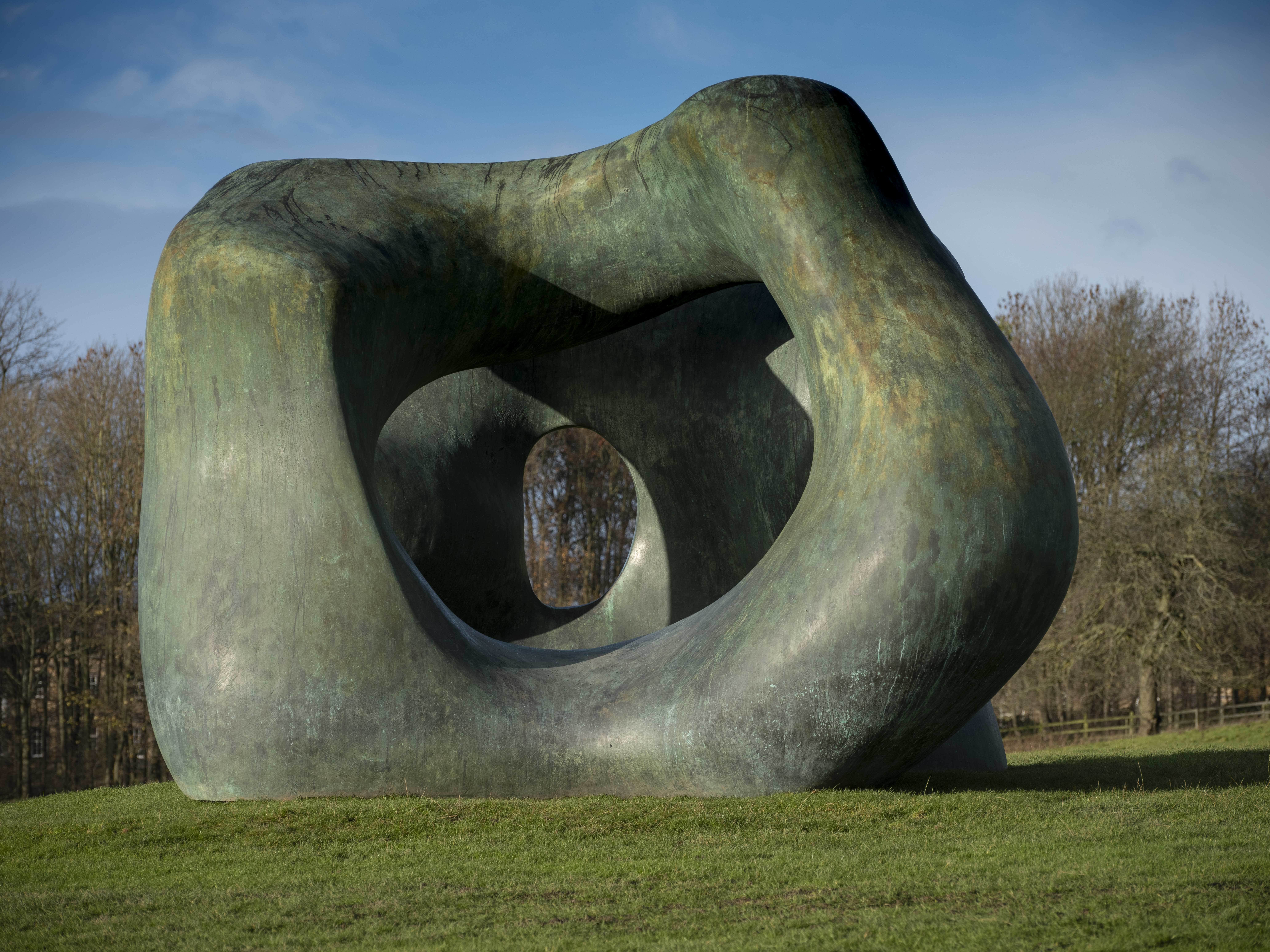
Henry Moore: Reclining Figure: Arch Leg
Art Outdoors /Henry Moore: Reclining Figure: Arch Leg
Henry Moore made his first reclining figure out of Mansfield stone in the early 1920s. The subject became his most recognisable and iconic, and one that he returned to prolifically throughout his career. Moore spoke about preferring it for practical reasons as, unlike a standing figure, it didn’t have to be self-supporting on two small points, as well as having a lower centre of gravity. It had also been a universal artistic motif since antiquity, and one that Moore considered, “gives the most freedom compositionally and spatially”.
A familiar place where he could experiment and apply evolving ideas, Moore’s recumbent figures reflect many different stages of abstraction, with Reclining Figure Arch Leg being highly abstract and comprising two highly simplified forms to suggest a body. Moore often thought of the human figure in terms of landscape, and the reclining position reflects the horizontal bands of earth, sea and sky. The torso and arched leg of this work could be seen as resembling a sea stack and arch as found around the coast of this country.


You might also like
- Art Outdoors

Henry Moore: Three Piece Reclining Figure No.1
- Art Outdoors

Henry Moore: Large Two Forms
Large Two Forms can be found in the Country Park – Moore’s favourite area of the Bretton Estate, where he enjoyed seeing his sculptures surrounded by sheep. The colossal sculpture is impressive in both scale and composition, appearing very different from every angle and continuing the theme of points that almost meet, which appears in much of Moore’s work. - Art Outdoors

Ursula von Rydingsvard: Heart in Hand
Heart in Hand relates to an earlier, larger work called Luba that was made in cedar and bronze, and is on permanent display at Storm King Art Center in upstate New York. Both works are intended to suggest a sense of protection and nurturing, like the arm of a mother cradling a baby. - Art Outdoors
Katrina Palmer: The Coffin Jump
The Coffin Jump was created at YSP in 2018 as part of the 14-18 NOW arts programme for the First World War centenary. Katrina Palmer was awarded the commission to create an artwork and she took inspiration from the role of women during the war, and in particularly the all-female First Aid Nursing Yeomanry (FANY).


